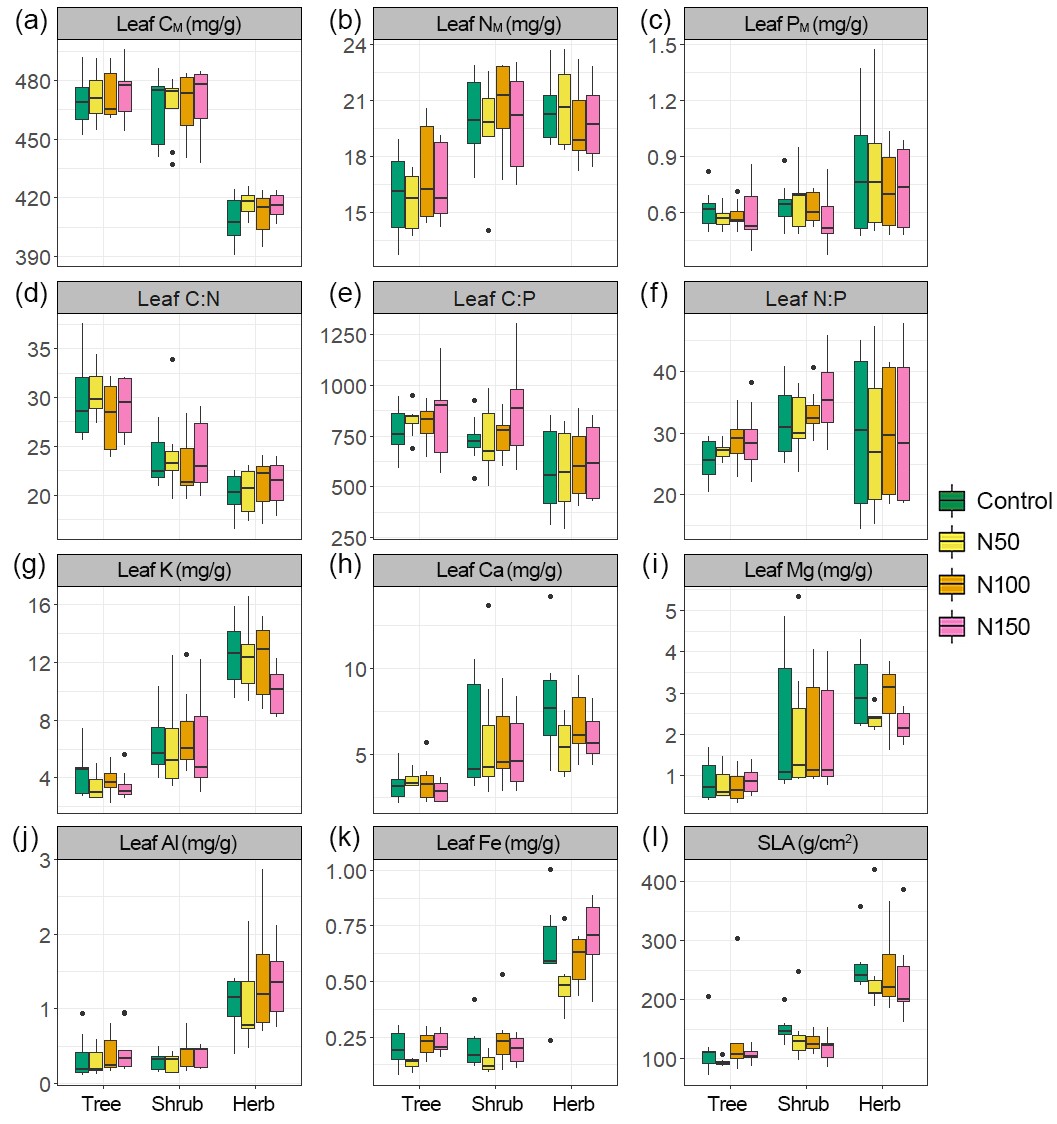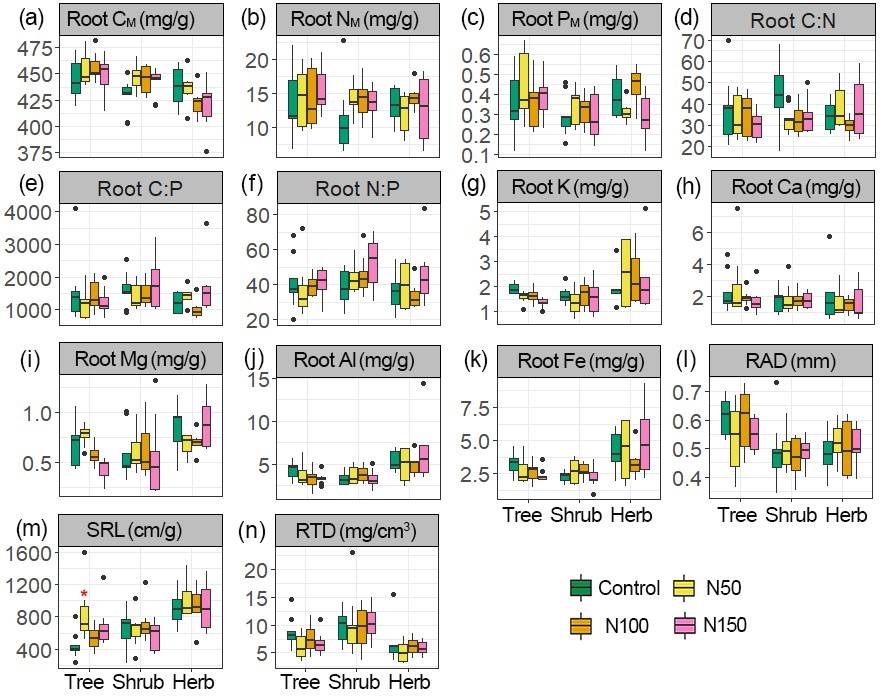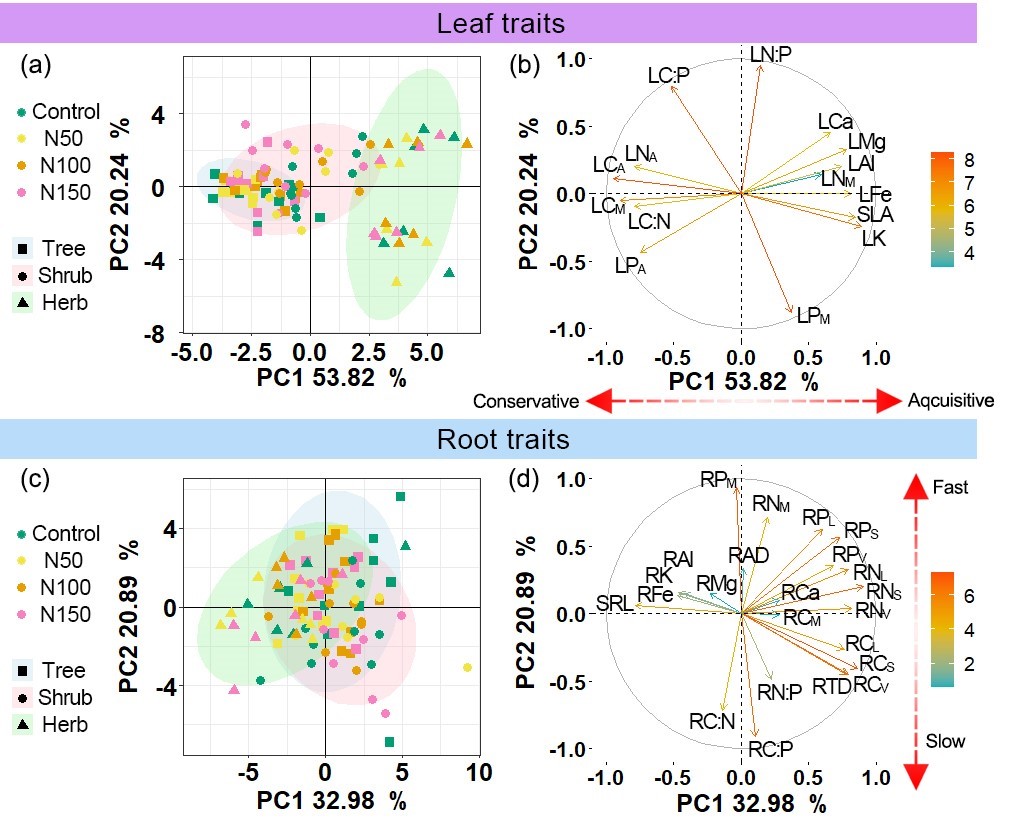Plant Traits Remain Stable After 18 Years of Nitrogen Addition in a Tropical Forest
As global atmospheric nitrogen deposition intensifies, its ecological impact on nitrogen-limited regions is well-documented. However, how prolonged nitrogen inputs affect plant functional traits in already nitrogen-saturated ecosystems remains uncertain. To explore this, researchers from the South China Botanical Garden, Chinese Academy of Sciences, conducted an 18-year nitrogen addition experiment (0, 50, 100, 150 kg N ha⁻¹ yr⁻¹) at the Dinghushan Forest in southern China, systematically examining 15 leaf and 22 root traits across eight species of trees, shrubs, and herbs.
The study found that long-term nitrogen addition had negligible effects on both leaf (Fig.1) and fine root traits (Fig.2) in all plant life forms. The leaf economics spectrum was more effective than the root spectrum in differentiating among plant types, yet nitrogen addition did not alter nutrient acquisition strategies (Fig. 3). Phenotypic plasticity remained unchanged across functional groups. However, at higher nitrogen inputs, herbs showed increases and decreases in the integration of leaf and root traits, with significant negative correlations observed between root phenotypic plasticity and integration.
Published in Plant and Soil under the title “Plant morphological and physiological traits are stable in a nitrogen-saturated tropical forest after 18-year nitrogen additions” (https://doi.org/10.1007/s11104-025-07484-6), the research enhances understanding of trait-environment relationships in nitrogen-rich ecosystems and supports improved trait-based modeling of long-term ecosystem responses. The study was led by first author Dr. YU Guangcan and corresponding author Prof. ZHENG Mianhai, with funding support from the Guangdong Provincial Distinguished Youth Fund and other national science programs.

Fig.1. Effects of N addition on 12 leaf functional traits of trees, shrubs, and herbs (Mean±SE, n=3).(Imaged by YU et al)

Fig.2. Effects of N addition on 14 root functional traits of trees, shrubs, and herbs (Mean±SE, n=3).(Imaged by YU et al)

Fig.3. Principal component analysis (PCA) of 15 leaf and 22 root traits under three N addition treatments (a, c). (b) PCA leaf variables. (d) PCA root variables.(Imaged by YU et al)
File Download: